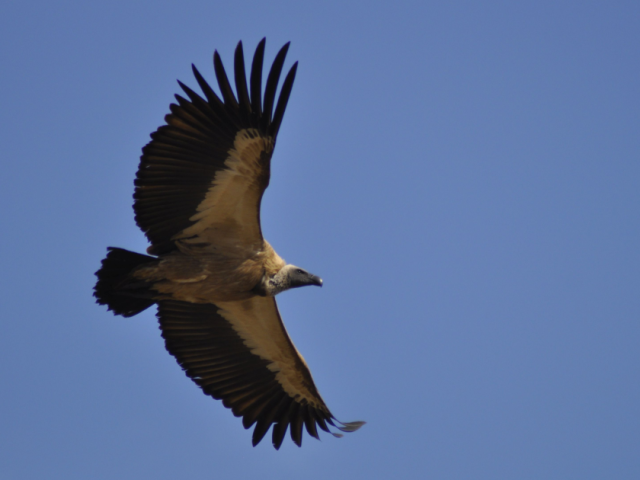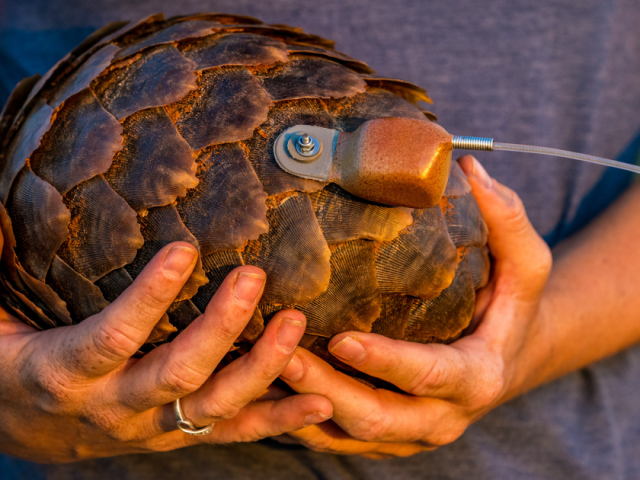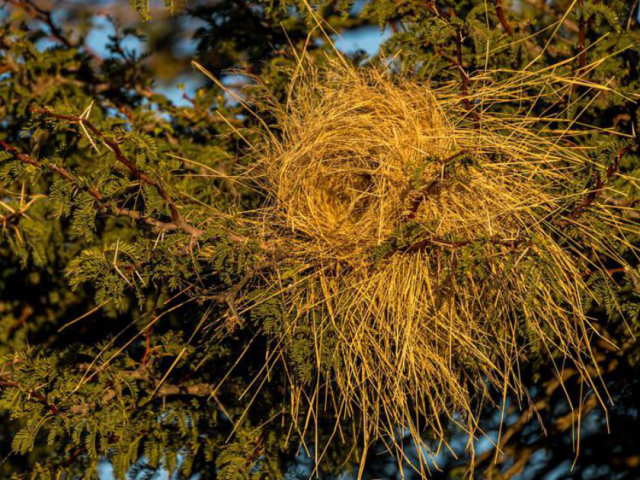Science, even when it comes up with answers to important problems, is often viewed by the public as Quixotic, a whimsical business of tilting at windmills, says Professor Andre Ganswindt, the director of the Mammal Research Institute “MRI” at the University of Pretoria. “As scientists,” he says, “we say ‘here is the problem’. People say, ‘we hear you’, but nothing happens. Do they not understand, or do they not want to?”
As frustrating as this is, Professor Ganswindt tends to be philosophical about the fact that research findings are not self-evident, and that they inevitably run into contending demands of vested interests.
Equally, the stakes are high, and the work important. One of only two such institutes in the world, the other being in Poland, the scope and volume of research conducted by the MRI is immense. Researchers come from all over the world to collaborate with South African colleagues in researching the behaviour, physiology, ecology and taxonomy of aquatic and terrestrial mammals. There are about 1100 species of mammal in Africa, many endangered, and many of whose habitats are being degraded, threatened or encroached on. Some, such as the Western Black Rhinoceros, declared extinct as recently as 2011, have been pushed over the edge, and this inevitably tends to focus the mind of researchers as they try to work out what makes mammals tick, and how they can help ensure that they carry on ticking.
While the research conducted by the MRI inevitably has an African bias, it stretches from Antarctica to India, Australia to Argentina, and a perusal of research papers shows investigations into animals large and small, from mole-rats to elephants, seals to chimpanzees, and critically endangered species such as pangolin and African wild dogs. Professor Ganswindt notes in passing that “the imminent challenge for mammal research, although not exclusive to it, is that the basic requirements for doing research are decreasing. And although in academia we prefer not to think it, it is related to funds. For all aspects of research you need financial support,” and so, much as he would prefer to be out in the field, a major aspect of his job is fund-raising.
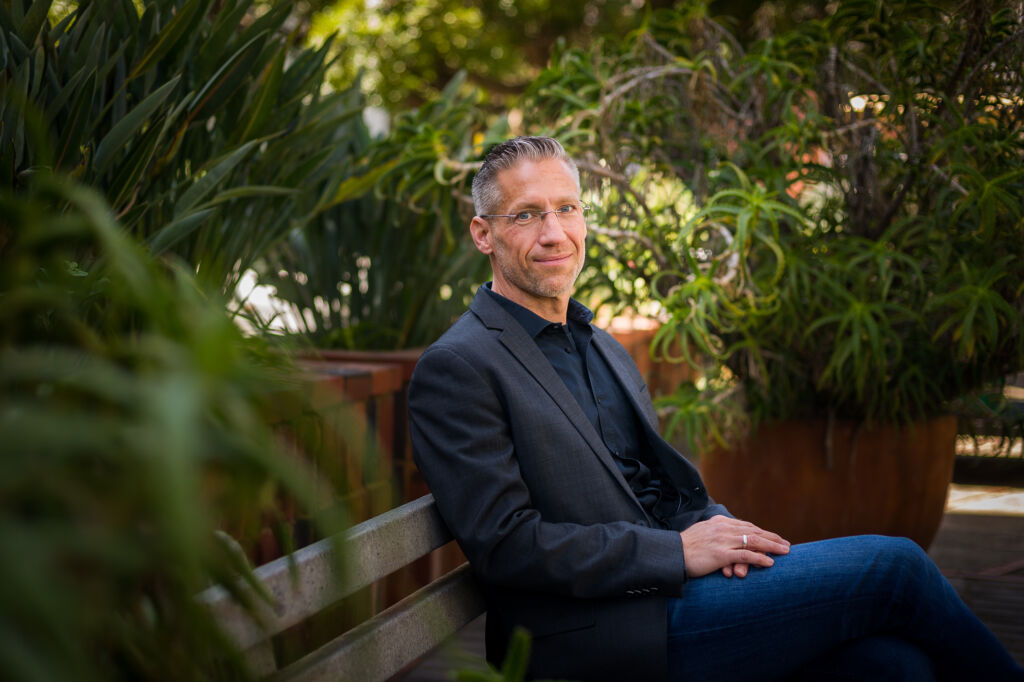
As an interwoven principle concept, there are two streams of research at the MRI, basic science and applied science, both ultimately aimed at having an impact on the conservation and management of species.
“With basic science,” explains Professor Ganswindt, “curiosity is the driver. At first glance, there seems no direct implication for improving situations, but more to add knowledge to understand unknown situations, whether behaviourally, physiologically or ecologically. And then when it pops up in the general media, very often you receive the question ‘So what? Now you know the earth is going around sun, and not the other way around, but so what?’”
“But basic science lays the foundation for applied science, or it can evolve into more applied science questions, and here you have a more understandable outcome, for the general public.
“So, speaking out of my area of expertise, we look at endocrine correlates to wildlife reproduction or welfare, and thereby develop non-invasive tools in order to do so. That means we don’t have to capture a tiger to measure its stress hormone levels, we can do it by just collecting excreta; we don’t have to disturb the animal, and therefore it is a welfare improvement,” which is an important improvement in wildlife management too.
“So, although all that research creates or adds to existing knowledge, it develops approaches to assist conservation measures, management measures, as well as answering questions linked to biodiversity or wildlife-human co-existence. It also helps to bring up young scientists by giving them the opportunity to do research and learn how research actually works.”
Even so, the “so what?” question continues to haunt Professor Ganswindt. “It increasingly puzzles me,” he says, “that for a certain problem, we are very good at collecting evidence on some of the big questions, for example climate change. I would assume if you ask any researcher who has at least touched on that topic, they would say by now we have collected sufficient information about the problem. We can go more and more into detail. We even have studies where we lay ways out of the dilemma. But I am missing the collective buy-in of the majority of us to engage with the problem.
He is acutely mindful, however, of exactly how science and its findings run headlong into complex, real-life obstacles.
“Bring the debate down from the global to a local scale, although it applies to all scales. If there is a presumed obstacle, let’s say space utilisation, farming, climate change, whatever, then first of all the impact of that problem might be perceived differently by different stakeholders. And also the reasons for current circumstances contributing to the problem are also seen differently. I would prefer that all stakeholders linked to a certain issue would discuss it from the start, so I can understand where everyone is coming from, and then hopefully find a way forward, which, yes, is a compromise, but which suits everyone to a certain extent, instead of just one party and the other one will reject it immediately.”
To get out of these impasses, Professor Ganswindt advocates strongly for two things, apart from good research: “first of all, an inclusive debate, and secondly honesty, when deciding on the way forward”.
“For some issues it is impossible because views are completely contrary, but still I think a debate needs to happen, and this is where I’d say honesty needs to come in. If one looks at pollution or climate change, I think that apart from a few, the majority will agree that we are heading in the wrong direction, and we are making our planet less liveable, fast. Some people get carried away and say we are destroying the planet, but we are not destroying the planet. It can most likely carry on quite well without humans, and will just evolve in another direction, but we will suffer. But if the majority of the human race decides, ‘you know what, I hear you, we have a problem, but I still don’t want to live worrying about resources, I just want my big 4×4 and that big mansion’, then I will have to accept that. But I will have to think whether it’s a good idea to bring the next generation into the world.
“I sometimes think we have that Don Quixote obstacle and we’re tilting at windmills. Because I’m shouting out ‘look, here is the problem’, and I get the answer ‘yes, we hear you’, but there is no response action to it. And I don’t know whether this is just because they don’t understand, or they just don’t want to. And if the majority don’t want to, we can do quite a lot of things but I’m not sure we’ll ever be successful.”
While the fate of the world hangs in the balance, research must go on, in the hope of understanding the elements of what makes the planet more liveable for a range of mammals.
In his capacity as Oppenheimer Chair for Emerging African Scientists in Non-invasive Wildlife Research, Professor Ganswindt is also currently supervising research on several reserves owned by the Oppenheimer family. The research is made possible by a Oppenheimer Generations Research and Conservation facilitated BRO Trust grant of nearly R8 million over six years, and aims broadly to contribute to preserving species and ecosystem diversity and health, and supporting biodiversity stewardship, “by generating much-needed information for decision support” and contributing to “the development of highly skilled, research orientated, young African academics”.
One project is looking at how tourists perceive ecotourism and how ecotourism activities affects the stress levels of game species at Tswalu Kalahari Reserve. Also at Tswalu, researchers are trying to get to the bottom of why populations of springbok and red hartebeest are dwindling.
The grant requires non-invasive research. Is that for purely ethical reasons, or does it make for better research, or better science?
“Yes, there are ethical implications, not just for your own perception, but very bluntly speaking, I would not get permission to do certain research anymore which people in the 60s or 70s could do. That’s not possible anymore. Finding a non-invasive alternative to get physiological data from animals is an elegant way to address the current standard of our awareness of the importance of animal welfare, but it has also its benefits.
“For example, the two major areas my groups work on are reproduction and welfare. We are looking at physiological biomarkers, in this case a particular group of steroid hormones, which get increasingly produced if the animal perceives a stressor. Those biomarkers fluctuate during the day quite a bit, and this effect is dampened by using a metric like faeces, because it’s a more summarised signal of a period of time. The other advantage is that you are measuring a stress indicator in an animal without stressing the animal. If I had to capture that individual for a blood sample, I would get very high stress levels, but they will not answer any of my questions, they just reflect the procedure of getting the sample.
“There are also limitations to that approach, at least in my field, but the advantages outweigh them, and non-invasive data collection opens the door to other novel approaches.
“Assessing stress levels, and how animals react to stress, offers insights into how, among other things, reproductive trends are affected, and how those in turn affect the viability of a species or population.
“You find a stress response in almost all species. This reaction to restore homeostasis is a good thing. If you imagine, a few thousand years back, a person running across a plain and here comes a pride of lions. Your body will perceive that as a stressor, and it has to react to it. The body preps you to overcome that stressor, which is usually very severe, but very short-lived. You either escape from that situation by running away and climbing a tree, and waiting until the lions are gone, and you come down and the situation is resolved. It has a positive effect; that’s why it’s there.
“But nowadays, humans, as well as quite a lot of wildlife, perceive prolonged stresses. We seldom have to outrun lions, but we’re sitting in traffic every day, and you have to deal with exams, and write articles about non-compliant scientists, and all of that. And the body is still reacting in the same way. The thing with that reaction is that we are an efficient mechanism. By focusing on getting you back into homeostasis, the body will reduce, or neglect, certain other processes which are currently not relevant. Your immune system will be compromised, your reproductive system will be reduced. In the case of the lions, to overcome your current situation you don’t need to think about reproduction next year, because you might be dead. But in the traffic scenario, nothing changes, so your body is trying to adjust and it starts reducing its functions. A nice correlation is if you look at exams, and how quickly people get sick afterwards. Exam time is a long time of perceived stress, and as soon as the body stops having to deal with that students get sick. It’s a normal reaction.
“So if we see situations where certain species of wildlife are under increased stress there can be a reduction in reproduction. Bear in mind that reproduction success is such a strong driver that you would need quite a bit to compromise it in a way that it is not happening. Research we conducted in India for example (as well as in South Africa) shows that tigers in reserves with a high visitor number, have reduced reproductive success compared to tigers with less anthropogenic impact. The positive result of that research is that the relevant provincial government promised to enforce visitor numbers more rigorously”.
Yves Vanderhaeghen writes for Jive Media Africa, communications partner for Oppenheimer Generations Research and Conservation.
Professor Andre Ganswindt studied Biotechnology at the Beuth University of Applied Sciences in Berlin. For his PhD thesis, he studied the physical, physiological and behavioural correlates of musth in captive African elephants. In 2013, he became Associate Professor Department of Anatomy and Physiology of the University of Pretoria, and in 2017, he became Professor and Director of the Mammal Research Institute, University of Pretoria.
He received a B2-rating from the National Research Foundation in 2017, renewed in 2023. He is a member of the Elephant Specialist Advisory Group – South Africa, the International Society for Behavioral Ecology, the Association for the Study of Animal Behaviour, as well as the Ethologische Gesellschaft. Professor Ganswindt is currently the president of the Zoological Society of Southern Africa and was the Chair of the International Society for Wildlife Endocrinology (2019-22). In March 2020 he was awarded membership of the Academy of Science of South Africa and in September 2022 he became a fellow of the Royal Society of South Africa. Since 2021, he has held the Oppenheimer Chair for Emerging African Scientists in Non-invasive Wildlife Research.
- Tracking the Shangani Wanderer - June 18, 2025
- Rescue, rehabilitate, release: tracking the comeback of South Africa’s pangolins - June 18, 2025
- Fewer weavers, fewer homes: why nest builders matter in the Kalahari - June 17, 2025
Additional News
Pangolins are elusive and heavily trafficked. At Tswalu, researchers are working to uncover their secrets and aid conservation.
Declining Sparrow-Weavers may threaten other birds that rely on their old nests for shelter.
